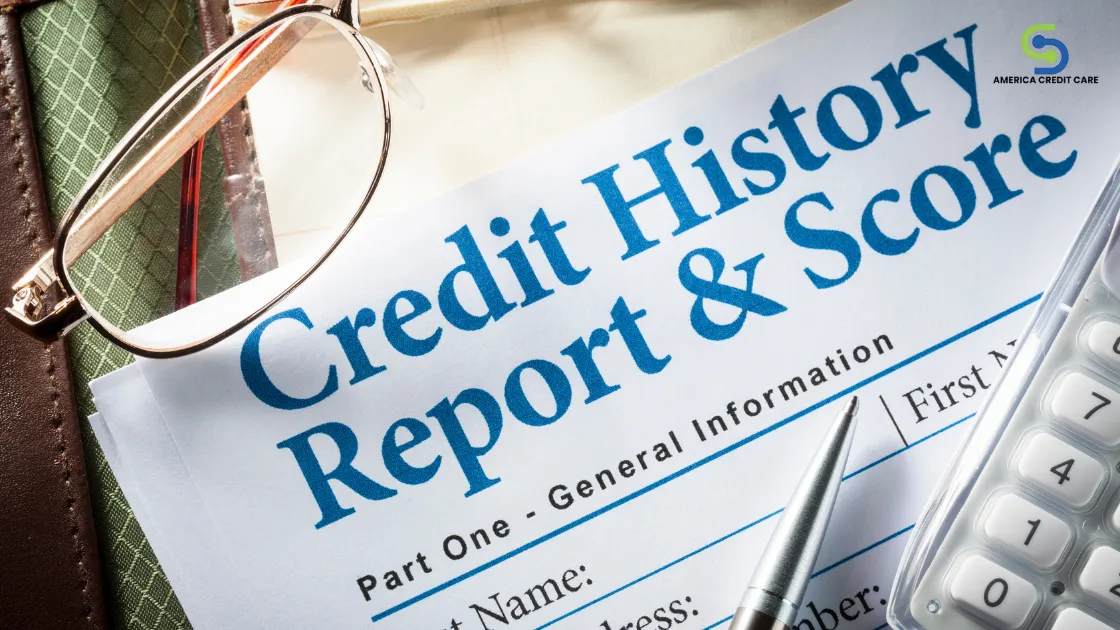Blog
Contact Us
At Credit Care of DMV, we don’t just repair, but also educate people about credit so that they never find themselves in that same situation in life.

How to delete paid collections from my credit report?
Paid collections generally stay on your credit report for seven years from the original delinquency date. Settling debts in collections merely changes the status to ‘paid’ or ‘zero’ balance but does not automatically delete the tradeline.
However, you may be able to remove collection marks from your credit report if they’re inaccurate, you successfully negotiate a “pay-for-delete” deal before paying, or the collector agrees to a discretionary “goodwill” removal request. We will discuss these ‘collection removal options’ in more detail below.
Can medical collections be removed from my credit report?
Medical collections have special rules where paid items are already excluded.
More than 100 million Americans were reportedly struggling with some form of medical debt in 2022.
This financial burden generally stems from unexpected health emergencies that leave patients with unpaid bills. It is often made worse by the complex and sometimes opaque billing and debt collection systems within the healthcare sector.
Starting in July 2022, the three major credit bureaus announced updates in how medical debt collections will be reflected on credit reports:
Medical debts that have been fully paid will no longer appear on credit reports.
Unpaid medical debts will now have a one-year grace period before being listed, extended from the previous six-month limit.
Thus, paid medical collections were removed from U.S. reports starting July 2022, and medical collections under $500 were removed in April 2023.
Now, a CFPB (Consumer Financial Protection Bureau) rule finalized in January 2025 is set to remove medical bills from credit reports more broadly.
The new rule intends to curb the use of credit files as leverage in medical debt collection. The rule is expected to
Erase roughly $49 billion in medical debts from the credit records of about 15 million people
Bar lenders from factoring medical information into credit decisions
Strengthen privacy while limiting tactics that pressure consumers to pay inaccurate or insurance-eligible bills
The CFPB noted that medical debts are poor predictors of creditworthiness and that billing errors and misapplied insurance or financial assistance frequently saddle consumers with incorrect charges.
Different scoring models treat paid collections differently
Different credit scoring models don’t treat paid collections in your credit report the same way. Some still count them against you; newer ones usually don’t.
How FICO models handle collections
FICO 8: This scoring model counts paid collections if they still appear on your reports. It doesn’t ignore them. This model remains widely used by many card issuers and lenders in the United States.
FICO 9: This scoring model ignores all paid third‑party collection accounts; it also gives unpaid medical collections less weight than other unpaid collections.
FICO 10/10T: Like FICO 9, these newer models ignore paid third‑party collections; 10T also uses “trended” data over time. Adoption is growing and is part of the FHFA move for conforming mortgages.
Mortgage “Classic” FICOs (FICO 2, 4, 5): These are older versions that were used in most mortgage underwriting processes until the late‑2025 transition; these scoring models do not ignore paid collections the way FICO 9/10 do.
How VantageScore models handle collections
VantageScore 3.0 ignores paid collections and is more forgiving of medical collections overall.
VantageScore 4.0 also ignores paid collections; additionally, the bureaus implemented changes so medical collection data is not used in VantageScore 3.0/4.0 calculations.
Who uses what (generally)
Mortgages: Historically, lenders used the “Classic” FICO trio—FICO 2 (Experian), FICO 4 (TransUnion), and FICO 5 (Equifax). From late 2025 onward, FHFA’s initiative enables lenders selling conforming loans to use FICO 10T and VantageScore 4.0, phasing in modern models that ignore paid collections. During transition, some lenders may still rely on Classic FICOs.
Bank credit cards and retail cards: Commonly use FICO 8 or 9, and some use VantageScore 3.0/4.0; practices tend to vary by issuer. If they use FICO 8, a paid collection can still hurt; if they use FICO 9/10 or VantageScore 3.0/4.0, paid collections are ignored. So, in this case, you need not work to remove paid collections from a credit report.
Auto loans: Many use industry‑specific FICO Auto Scores (8 or 9) or older versions; policies vary by lender and region. FICO Auto 9 inherits FICO 9’s treatment (ignores paid collections), while earlier versions can still count them
Book a Non-obligatory Consultation with a Credit Repair Specialist Today!
Pathways to collection mark deletion after payment
Dispute inaccuracies: If any detail is inaccurate or unverified (amount, dates, ownership, re-aged DOFD), file disputes with each bureau to delete or correct. If the furnisher cannot verify, the bureau must delete.
Goodwill deletion: After paying, you can request a goodwill removal from the collector or original creditor; this is voluntary and not guaranteed.
Pay-for-delete (PFD) before paying: Most effective when negotiated in writing prior to payment; less leverage after payment, but you can still ask—approval is discretionary and not endorsed by bureaus
Remove collections from your credit report with pay-for-delete (PFD)
In this case, you offer money to settle the debt, and in return, the collector agrees—in writing—to request deletion of the collection from your credit reports.
Essentially, it's a written agreement where the collector will request deletion after you pay the agreed amount.
It’s somewhat controversial because credit bureaus want accurate history; therefore, many collectors, especially large organizations, won’t agree. It’s not illegal to ask, but they’re not required to oblige.
This pathway to remove collections from your credit report works best if you negotiate the PFD deal before you pay. This way, you still have leverage.
If it’s already paid, you can still ask, but the odds go down.
Keep in mind that pay-for-delete deals won’t typically fix late payment marks reported by the original creditor. A pay-for-delete arrangement to remove collection marks will only affect the collector’s entry.
Here are some risks that you should avoid:
Paying without a written agreement. No letter, no deal.
Vague promises. Get specific language: “We will request deletion from Equifax, Experian, and TransUnion within 30 days of payment.”
Paying the full sticker price when a settlement might work. Many collections are bought for less, so negotiation is normal.
You can read our beginner’s guide to pay-for-delete arrangements for step by step instructions.
Goodwill deletion of collections from a credit report
Goodwill deletion is more like asking for a favor after you’ve done the right thing.
It’s a polite, formal request to delete or soften a negative mark (like a paid collection mark or a one-time late payment mark) because you’ve made things right and your overall history is good.
A goodwill deletion request can be submitted to the collection agency that reported the collection, or the original creditor if they are the reporter.
This pathway to remove collections from a credit report can work when there’s a genuine, brief hardship (job loss, medical issue), a strong ‘before and after’ record, and a respectful tone. It’s discretionary—some say yes, many don’t.
Here’s what your goodwill deletion letter should ideally mention:
The account is paid/settled and now $0.
Your brief hardship in one or two sentences.
Your positive payment streak since.
A specific upcoming goal (mortgage/car loan) that responsible reporting would help.
Pay-for-delete vs. goodwill deletion: Which one should you use?
If unpaid: Try PFD first. It’s your best leverage point.
If already paid: Try goodwill. You can also ask for a post-payment PFD, but it’s less common.
If inaccurate: Dispute with the bureaus instead—that’s stronger than either PFD or goodwill.
Dispute erroneous collections
If anything is wrong—amount, dates, duplicate entries, wrong person, or “re-aged” dates—you can immediately file disputes with each bureau.
If the collector fails to establish the accuracy of a collection mark, it must be corrected or deleted.
Common errors to look for in collection accounts
Catching mistakes in collection accounts isn’t just “nice to have”—it can be the difference between a quick deletion of a collection mark and years of score drag.
Credit reports are compiled from massive data feeds, and things get misreported more often than people think: wrong dates, double listings, mixed files, even balances that don’t match what you actually owed.
When you or a credit repair specialist flags specific inaccuracies on your behalf and backs them up with documents, the law gives you the right to dispute and have items corrected or deleted if the furnisher can’t prove they’re accurate.
Professional credit restoration service providers do this work every day; after reviewing thousands of reports, their teams are trained to spot subtle red flags in minutes and file tightly written disputes that force a clean investigation.
Book Your Free Credit Consultation Today!
The payoff is real: remove what’s wrong, update what’s outdated, and your score can climb faster than with time alone.
The list of collection account errors to watch out for
Not your debt or mixed file: Similar name/address causes someone else’s account to appear on your report.
Identity theft: Account opened or placed after fraud; look for addresses or employers you don’t recognize.
Wrong balance or status: Paid/settled accounts still showing a balance, or listed as “open” when they should be “closed/paid.”
Interest or fees errors: Balance inflated by fees not allowed under your agreement or state law.
Wrong account type or owner: Reported as your primary account when you were only an authorized user.
Re-aged delinquency date: The date of first delinquency (DOFD) is pushed forward, making the account last longer than seven years.
Wrong “date opened” or “last payment” dates: These should align with records; big mismatches are red flags.
Same debt reported twice: Original creditor charge-off plus a collection, or multiple collectors listing the same debt at the same time.
Multiple tradelines after sale: If debt was sold, the prior collector should report a zero balance or be removed; both must share the same DOFD.
Paid medical still reporting: Many paid or small-dollar medical collections should no longer appear; lingering medical-collection related items may be removable.
Provider vs. collector mismatch: Names and amounts should match the underlying bill and your explanation of benefits.
No validation available: Collector can’t provide the agreement, statements, or itemized amounts when asked.
Name/address mismatches: Furnisher info or account numbers that don’t match your records.
No required notices: You never received the initial collection notice with dispute rights.
Reporting after settlement terms: Agreed “paid in full” or “settled” status not reflected after the promised update window.
Quick checklist to review each collection mark on your credit report
Do I recognize the creditor/collector and the original account?
Is the balance exact, with fees/interest explained?
Do the DOFD and last payment dates match my records?
Is this listed anywhere else on my credit report (duplicate)?
Is the collection status correct (paid, settled, $0)?
For medical debt: Is this eligible to be excluded now that it’s paid or under the threshold?
What to do if you find errors in collection marks
Gather proof: Payment receipts, settlement letters, billing statements, ID theft report, EOBs.
Dispute with each bureau: Clearly state the error, attach proof, and ask for deletion or correction.
Send a validation/goodwill request to the collector: Ask for documentation if ownership/amount is unclear; or request a goodwill deletion if it’s paid and accurate except for status wording.
Re-check in 30–45 days: If not fixed, re-dispute with any new evidence and escalate as needed.
How a credit repair company can help
When collections show up—paid or unpaid—experienced credit repair specialists can help you deal with them in a systematic manner.
They read credit reports the way underwriters do, spot subtle errors in minutes, negotiate pay‑for‑delete before a dollar moves, and craft goodwill requests that actually get answered.
Just as important, they organize the paperwork trail, time updates across all three bureaus, and guide you on the habits that keep scores climbing long after a collection is resolved.
Book Your Free Credit Consultation Today!
In short, having a credit restoration service provider by your side implies fewer mistakes, faster fixes, and a cleaner path to the approvals you care about.
#1. Disputing and removing inaccurate collections
What they do: Audit all three credit reports to find errors like wrong balances, re-aged dates, duplicates, or mixed files. Then file targeted disputes with supporting documents to force a reinvestigation and, when unverified, deletion or correction.
Why it helps: The law requires furnishers and bureaus to fix or remove items they can’t verify as accurate. A precise, evidence-backed dispute often gets faster results than a generic online form.
What you get: Cleaned-up reports, corrected dates and statuses, and in many cases removal of unverifiable collections—helping your score and underwriting profile.
#2. Pay-for-delete (PFD)
What they do: If a collection is unpaid, they can negotiate—before paying—to exchange payment for a written agreement that the collector will request deletion with all bureaus.
Why it helps: Some collectors agree, and having pros handle negotiation, wording, and proof prevents common mistakes like paying without a written commitment.
What you get: A clear, signed PFD letter, structured payment, and follow-up to ensure the deletion posts within the promised window.
3. Goodwill deletion
What they do: After you’ve paid, they draft persuasive goodwill requests highlighting brief hardship, your now-strong payment streak, and near-term goals (mortgage, auto). They identify the right contacts and follow up.
Why it helps: Deletions are discretionary, but the right tone, evidence, and contact path can turn a “no” into a “yes.”
What you get: Professional letters and escalations that meaningfully improve your odds for courtesy deletion or at least a favorable status update.
Credit restoration services can also help fix other report drags. They tackle late-payment errors, obsolete negatives, duplicate tradelines, incorrect personal data, wrong limits/loan amounts, and inquiry issues—each of which can suppress scores.
Credit repair specialists can also place fraud alerts or freezes, file identity-theft reports, and demand itemized validation when ownership/amounts are unclear.
Many credit repair companies even advise on utilization strategy and financial management to help achieve and maintain a good credit score. For instance, they may:
Advise on optimal credit card utilization (for example, paying to report under key thresholds) and sequencing payments to maximize score impact by the next statement cycle.
Help preserve the age of credit, avoid unnecessary closures, and time any new accounts to support your goals (mortgage readiness, business credit, etc.).
Help set up practical routines—autopay for minimums, due-date alignment, reminders—to keep perfect on-time history going forward.
Guide you on which models a lender might use, what debt to settle first, and how to present documentation so underwriters read your file favorably.
Track bureau responses, escalate stubborn items, and re-dispute with new evidence if needed, ensuring changes actually hit your reports.
LET'S TALK
Get in Touch.
Thank you for your interest in Credit Care of DMV. Please use the contact form to tell us about your inquiry and/or needs. We look forward to partnering with you.

Office
NMLS ID 2423540
16701 Melford Blvd
Ste 400
Bowie, MD 20715

Email Us

Phone Support
+1 (240)-347-5995- Calls
+1 (240) 376-2552 - Text
Need help?
Don't hesitate to contact us.

We have many years of experience in evaluating credit and guiding consumers to assert their legal rights. We do it every day! We guarantee honesty and dependability, virtues which most people seem to have forgotten.
FREE DIY Credit Repair Toolkit!
Signup for our DIY Credit Repair Toolkit! Also get updates, promotions, news & insight about finance.
Copyright ©2025 America Credit Care. All rights reserved. Powered by WebbArtt Solutions
Legal Notice
NMLS # 2423540
Term of Use
Privacy Policy
Cookie Policy

We have many years of experience in evaluating credit and guiding consumers to assert their legal rights. We do it every day! We guarantee honesty and dependability, virtues which most people seem to have forgotten.
Copyright © 2025 America Credit Care. All rights reserved. Powered by WebbArtt Solutions









